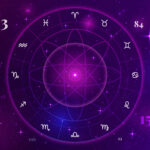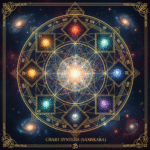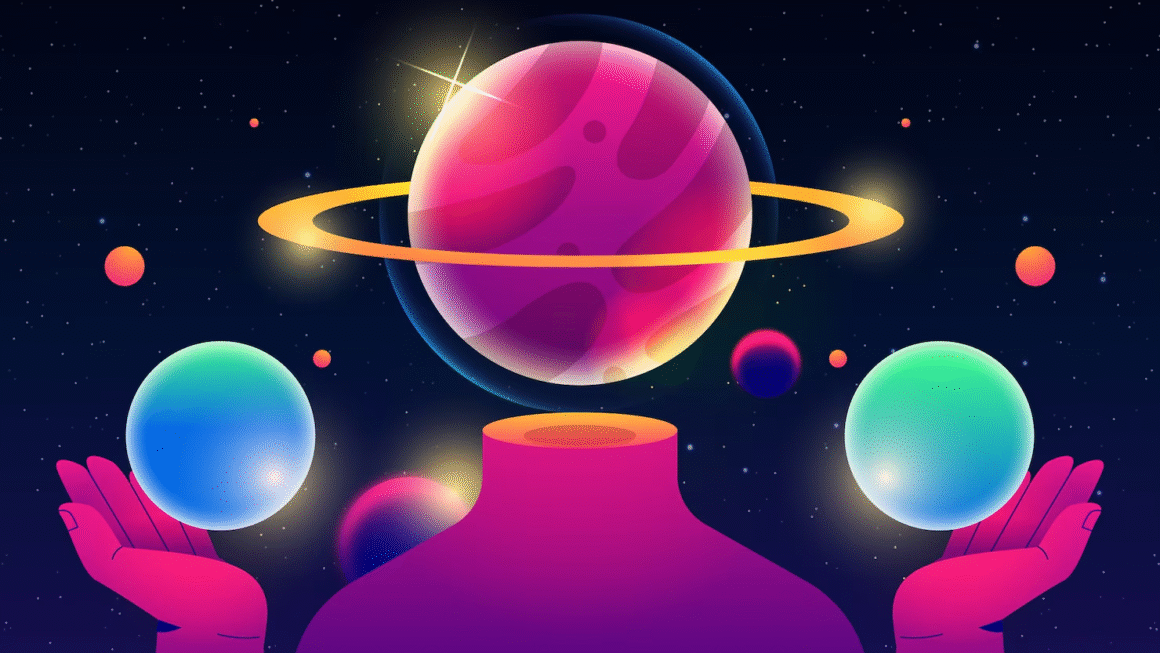Among the grand celestial patterns that govern human civilization, few are as profound as the Saturn Jupiter conjunction — known in both Western and Vedic mundane astrology as the “Great Conjunction.” Occurring approximately every 20 years, this meeting of the two social planets marks the rhythmic heartbeat of human history — a cycle that defines eras, ideologies, and the rise and fall of empires.
Astrologers since antiquity have regarded this conjunction as the “Crown of Chronocrators,” the royal clock of destiny that unites Saturn, the planet of structure and law, with Jupiter, the planet of expansion and wisdom. Together, they form the bridge between the personal and the collective, shaping the moral, political, and economic fabric of societies.

The Meaning of the Great Conjunction in Astrology
In great conjunction astrology, Jupiter and Saturn represent opposing yet complementary principles:
- Jupiter expands, inspires, and brings faith, opportunity, and philosophical growth.
- Saturn contracts, disciplines, and tests foundations, ensuring endurance and realism.
When they align in the same sign, these forces merge — signaling a reset in collective direction. Governments, economies, ideologies, and social orders all begin a new 20-year cycle. It is as if the cosmic pendulum swings from one world order to another, setting the tone for the coming decades.
Yet the importance of the Saturn–Jupiter conjunction extends beyond the 20-year rhythm. The element (Earth, Air, Fire, or Water) in which they meet determines the major cycles — long epochs of about 200 years that define the spiritual and material focus of humanity.
The 200-Year Elemental Cycles: The Turning of the Ages
Historically, each 200-year period of Great Conjunctions within a particular element corresponds with sweeping cultural and civilizational themes:
| Element Cycle | Era | Historical Theme |
| Fire (Medieval Period) | 800–1000 CE | Birth of kingdoms, religious crusades, and spiritual zeal. |
| Earth (Industrial Era) | 1802–2020 CE | Rise of capitalism, materialism, land ownership, and industry. |
| Air (Digital–Information Era) | 2020–c. 2199 CE | Expansion of ideas, technology, data networks, and global connectivity. |
For nearly two centuries, Saturn and Jupiter met in Earth signs, symbolizing an age obsessed with matter — resources, property, and tangible progress. The Industrial Revolution, colonial expansion, and the consolidation of global empires all echoed this earthy materialism.
Then came December 21, 2020 — a date etched into cosmic history. Jupiter and Saturn aligned at 0° Aquarius, an Air sign, initiating a new 200-year epoch. This marked humanity’s graduation into the Air Era — where power flows not through land or machines, but through ideas, data, and networks. Authority (Saturn) and wisdom (Jupiter) now express through the intangible realms of communication, innovation, and collective thought.
Historical Reflections of the Great Conjunction
To understand how profoundly the great conjunction influences world events, consider its echoes through time:
- Conjunction of 1623 – Occurred in the early stirrings of the scientific revolution and global exploration. The old feudal world of “divine right” began to crumble under rational inquiry.
- Conjunction of 1842 (Earth Era) – Marked the high tide of the Industrial Revolution. Steam power, factories, and colonial trade routes transformed society.
- Conjunction of 1980–81 (Libra) – Initiated global economic liberalization, the digital revolution, and the acceleration of globalization.
- Conjunction of 2000 (Taurus) – At the height of material prosperity, symbolizing the “dot-com bubble” and the age of consumer capitalism.
- Conjunction of 2020 (Aquarius) – Amidst a global pandemic, we witnessed digital acceleration, remote work, and social restructuring — all pure Aquarian motifs.
Each conjunction births a new worldview. It represents a moment when humanity collectively reconsiders what it values, how it governs, and how it organizes itself. The great conjunction astrology acts as a mirror of civilization’s consciousness.
The Air Era: A Shift in Civilization’s Axis
The 2020 conjunction in Aquarius was not merely another alignment — it was the pivot point between epochs. The Air Era brings a symbolic decentralization of power. Just as Earth signs favored hierarchy, land, and industrial control, the Air signs (Gemini, Libra, Aquarius) celebrate equality, networks, and intellect.
We are already seeing its major cycles unfold:
- Governments grappling with information control and digital privacy.
- Economies shifting from material production to virtual and creative economies.
- Societies redefining identity through technology, AI, and collective consciousness.
In Vedic astrology, Aquarius (Kumbha) is the water-bearer — symbolizing distribution and collective upliftment. Thus, the new age is not about owning the world’s resources, but about sharing its wisdom.
Opinion: The Saturn–Jupiter Cycle as Humanity’s Clock
In my view, the Saturn–Jupiter conjunction serves as humanity’s cosmic metronome — the divine timing device that syncs human progress with celestial intelligence. While eclipses and transits trigger short-term shifts, the great conjunction marks the deeper pulse of civilization’s evolution.
Each meeting of these titans tests humanity’s integrity: Saturn asks, “Is this sustainable?” while Jupiter replies, “Is this meaningful?” The dialogue between these two forces writes the history of our species — balancing aspiration with accountability.
Example: The Great Conjunction of 2020 — Rewriting the Global Script
The 2020 Great Conjunction in Aquarius coincided with:
- The redefinition of work and education (remote, digital-first systems).
- The weakening of rigid hierarchies in favor of global collaboration.
- The rise of decentralized finance, AI, and information sovereignty.
Saturn, the planet of boundaries, joined Jupiter, the planet of expansion, in an Air sign — a perfect metaphor for “structured innovation.” What emerged was not chaos but reorganization: a Saturnian restructuring of Jupiterian ideals.
This is why mundane astrology regards such conjunctions as “epoch markers.” They don’t merely predict events; they symbolize humanity’s psychological and spiritual evolution.
Restatement: The Cosmic Chronometer of Civilization
Therefore, the Saturn–Jupiter conjunction is more than an astronomical event — it is a cosmic chronometer guiding humanity through cycles of growth and restraint. Each Great Conjunction births a new paradigm, a fresh ideology, and a collective reorientation.By studying these major cycles, mundane astrologers don’t just forecast politics or economies — they interpret the story of human consciousness itself.











